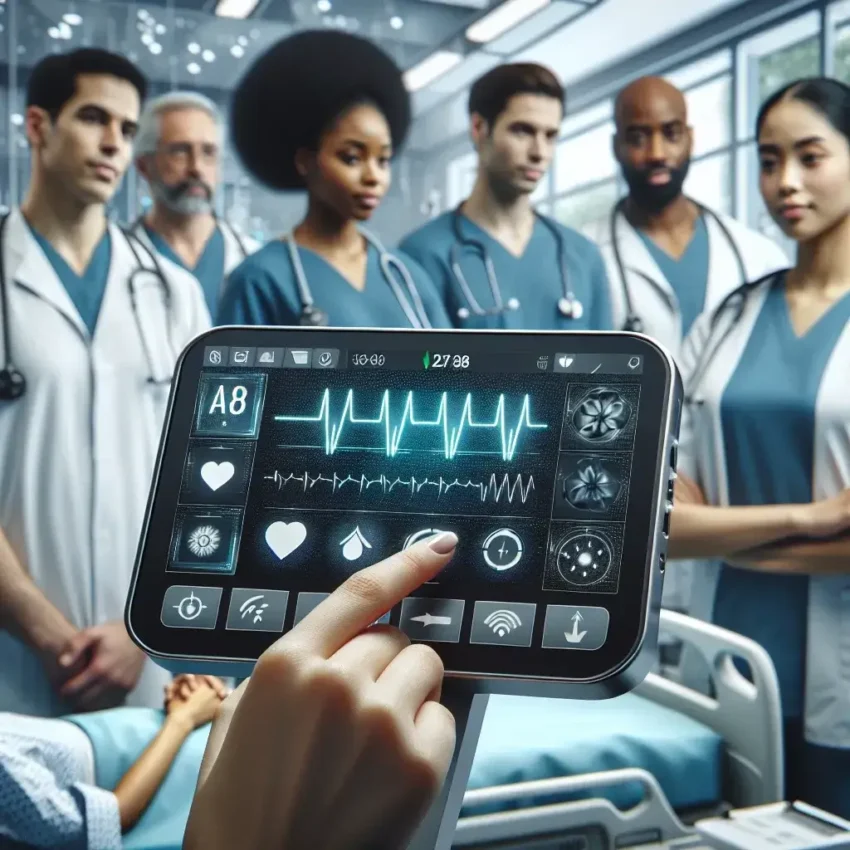The healthcare industry is undergoing a significant transformation with the introduction of Artificial Intelligence (AI) powered technologies. One of the most promising advancements is the implementation of AI powered bedside monitoring devices in U.S. hospitals. These devices are not only enhancing patient care but also streamlining hospital operations, improving outcomes, and reducing costs. In this article, we will explore how these devices work, their benefits, challenges, and the future of AI in healthcare.
Understanding AI Powered Bedside Monitoring Devices
AI powered bedside monitoring devices are advanced systems that collect and analyze patient data in real-time. These devices typically integrate various sensors and algorithms to monitor vital signs, detect anomalies, and provide actionable insights to healthcare professionals. The technology combines machine learning, big data analytics, and the Internet of Things (IoT) to create a comprehensive monitoring solution.
How Do These Devices Work?
The core functionality of AI powered bedside monitoring devices involves continuous data collection from patients. Sensors placed on or around the patient monitor vital signs such as heart rate, blood pressure, respiratory rate, and temperature. This data is then transmitted to a central system where AI algorithms analyze it to identify trends, flag potential health issues, and alert healthcare providers in real-time.
Key Features of AI Bedside Monitoring Devices
- Real-Time Monitoring: Constant tracking of vital signs ensures that any changes in a patient’s condition are immediately addressed.
- Predictive Analytics: AI algorithms can predict potential complications before they occur, allowing for timely interventions.
- Data Integration: Integration with electronic health records (EHR) provides a holistic view of patient data.
- Alerts and Notifications: Automated alerts ensure that healthcare providers are promptly informed of critical changes, facilitating quick decision-making.
Benefits of AI Powered Bedside Monitoring Devices
The adoption of AI powered bedside monitoring devices in hospitals offers numerous advantages:
Enhanced Patient Safety
With real-time monitoring and predictive analytics, these devices significantly improve patient safety. Early detection of critical changes in a patient’s condition can prevent adverse events, reducing the likelihood of complications or mortality.
Improved Efficiency
AI devices help streamline hospital workflows by reducing the time nurses and physicians spend on manual monitoring. Automation allows healthcare providers to focus on patient care, enhancing overall efficiency.
Cost Reduction
By preventing complications and unnecessary admissions, AI powered monitoring devices can lead to substantial cost savings for healthcare facilities. The long-term financial benefits can be significant, especially for hospitals operating under tight budgets.
Challenges in Implementation
Despite the promising benefits, the implementation of AI powered bedside monitoring devices is not without challenges:
Data Security and Privacy
With the collection of sensitive patient data, there are concerns regarding data security and privacy. Hospitals must implement robust cybersecurity measures to protect against breaches.
Integration with Existing Systems
Many hospitals have legacy systems that may not be compatible with new AI technologies. Ensuring seamless integration can be a complex and costly process.
Training and Adaptation
Healthcare providers may require training to effectively use AI powered devices. Resistance to change can also pose a barrier to successful implementation.
Case Studies: U.S. Hospitals Leading the Way
Several U.S. hospitals are at the forefront of adopting AI powered bedside monitoring devices:
Mount Sinai Health System
Mount Sinai has implemented AI-powered monitors that analyze real-time data to predict deteriorating patient conditions. The system has reportedly reduced hospital readmission rates significantly.
Massachusetts General Hospital
Massachusetts General has successfully integrated bedside monitoring systems that utilize machine learning to enhance patient outcomes. Their approach has led to improved patient satisfaction and clinical efficiency.
The Future of AI in Healthcare
The future of AI powered bedside monitoring devices looks promising, with ongoing advancements in technology. As AI algorithms become more sophisticated, we can expect:
Greater Personalization
Future AI systems will offer more personalized monitoring solutions, tailoring alerts and interventions based on individual patient needs.
Expanded Use Cases
AI technology will likely extend beyond bedside monitoring to include telemedicine, remote patient monitoring, and chronic disease management.
Regulatory Developments
As AI technologies evolve, regulatory bodies will need to establish guidelines to ensure safety and efficacy, fostering further innovation.
Conclusion
The pilot programs for AI powered bedside monitoring devices in U.S. hospitals signify a crucial step toward revolutionizing healthcare. By enhancing patient safety, improving efficiency, and reducing costs, these devices are set to transform the way hospitals operate. While challenges remain, the potential benefits far outweigh the hurdles. As technology continues to advance, we can anticipate a future where AI plays an integral role in healthcare delivery, ultimately leading to better patient outcomes and a more efficient healthcare system.

